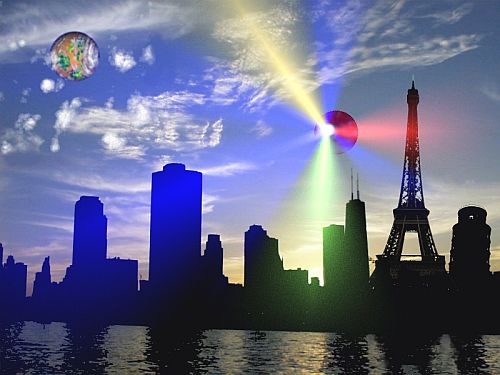“Muted melodies fill the echoing hall/But there is no sign of warning in the siren’s call” (Excerpt of the lyrics of the song “The Lamia” by the Genesis, UK 1974)
The largest part of music journalists considers dub music as a style of Jamaican reggae. At the beginning of the article, there’s a criticism about dub reggae, that in the early 1970’s was big in the UK. According to the Genesis, echo effects can kill the melodic part of songs, and are deadly fascinating like a siren’s call. Despite, given that many of my favorite tracks belong to dub music, and have nothing to do with Jamaican reggae, I humbly dissent, and attempt a different definition of the kind of music. I propose the following notion of dub music: a transversal branch of psychedelic rock, involving various musical genres, whose main feature is the decisive role of echoing sounds, intentionally and largely utilized to obtain hypnotic repetitions. In April 2023, I published a page in the matter of the origins of dub music, now off-line, and I have offered a new theory, worth to be summarized as follow: the earliest, successful song of dub music was “Time Has Come Today” by the Chambers Brothers (US 1966), that was inspired by the work of a genial, Egyptian compositor, Mr. Halim El-Dabh, who emigrated in the USA and released the LP “Crossing into the Electric Magnetic” (1959). The pivotal track of “Crossing into the Electric Magnetic” is titled “Michael and the Dragon”, and contains a fantastic representation of the psychology of a fallen angel, like Lucifer. I report, my description of the cited psychology: “The content of the angel’s rebellion is loving itself more than God, and the eternal punishment imposed by God is dual, by one side the end of self-love, to the other side the nostalgia for the strength of it. So, the entire activity of the fallen angel is describable as indefinite attempts to reconstruct the self-love. Naturally, echoing music is the most suitable to the devil’s vane attempts.” With other words, the ideal parents of evil are namable regret, intended as disrespect of the nature of time, and envy. After my excuses for self-citations, I explain that the reported theory is the starting point of the page you’re reading, dedicated to a deepening of the history of dub music.
The technique of dubbing sounds with a tape recorder is named “overdubbing”, dates back to the 1920’s, and was pioneered by RCA Victor. Starting from late 1940’s, some songs have included reverb and echo effects, obtained with overdubbing. Was it dub music? No, because those songs don’t contain any hypnotic repetition. The cited effects only serve to enrich the basic tune, with small variations.
The earliest audio unit for producing delay and reverb effects was Watkins Copicat, built in the year 1958 by the British engineer Charlie Watkins as a portable, affordable, tape echo machine. It was commercialized in the early 1960’s, and wasn’t immediately successful. The first musician to buy a Watkins Copicat MK1, whose commercial logo is a cat symbol, was Johnny Kidd of Johnny Kidd and the Pirates, and the band employed the unit for the recording of “Shakin’ All Over”, in the summer of 1960. Was it dub music? No, because the Watkins Copicat was intended as a simpler way to obtain the same results of the overdubbing.
The earliest dub version of history, more precisely a “dub remix”, was the side B of the maxi-single “Supafrico” by Bunny Mack, mastered by BilBo, alias the British sound engineer Mr. Denis Blackman. The vinyl record was released in the UK, in the year 1981. In the successive year 1982, A New York DJ, Mr. Shep Pettibone, was the first to do the same in the USA, for the single “Such a Feeling” by the Aurra. Was it dub music? Yes, and if you listened to the cited remixes, you would agree. It means that the popularization of dub music, as a stylish multi-genre, and not as a sub-genre of reggae, dates back to the year 1981.
Understandingly, the conclusion is equal to the title of the page. The new mix contains some of the earliest “dub remixes”, and is dedicated to those who want to know what exactly is “dub music”, the fascinating sound of devilish repetitions.
File name is “hypnotic and devilish repetitions, by Max Look DJ (Jan 2024)”, 1 hour 20’ and 50” of dub remixes, including some of the earliest, and true dub music.
The echoing playlist:
Kelly Rowland – can’t nobody (Silkmix.com 80’s hip hop flava 12”)
Dubtractor – W30
Charlotte – queen of hearts (M.A.W. dub)
Jah Wobble & Temple of Sound – once upon a time in the East
Rah Band – clouds across the moon (Super Nova mix)
Robbie Williams – rudebox (dub)
Sydney Youngblood – sit and wait (dub)
Aurra – such a feeling (part 2, mix by Shep Pettibone)
Winans – let my people go (dub mix by J. Morales and S. Munzibai)
Asian Dub Foundation – strong culture
Imagination – changes (DFP is Nightdubbin’ mix)
Third World – one more time (dub mix by Larry Levan and Judy Weinstein)
Sandy Kerr – thug rock (dub mix by J. Morales and S. Munzibai)
Paul Simpson Connection – treat me (Paul Simpson mix)
Radiance – you’re my number one (dub mix by J. Morales and S. Munzibai)
Affinity – don’t go away (DFP dub edit mix by Mark Kamins)
Bliss – long life to you my friend

